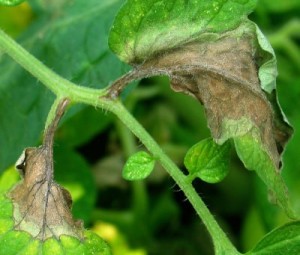My vegetable garden has started to turn yellow and then brown. It is dying; what can I do?
Hardiness Zone: 5b
By Carol from Wilcox, PA
Add your voice! Click below to answer. ThriftyFun is powered by your wisdom!
If vegetables or flowers get too much sun, or not enough water, or both, they will first turn yellow. then they will turn brown and eventually die. Check the care instructions on the tag that came with your plants, and follow those directions. If you do not have a tag, ask someone who knows or google the type of plants. If you correct the problem soon enough, you may save your plants.
Without seeing a picture my initial response was wondering if your garden has late blight. Earlier in the summer NY and PA tomato farmers identified a fungus getting into their plants which caused them first to yellow, then brown up and die. this fungus is now being found in potatoes and squash.
In an effort to avoid the catastrophe that happened last year, please monitor your tomatoes and potatoes in earnest. Look for dark watery lesions on the leaves, stems and fruit. Late blight spreads quickly. Cornell recommends "If late blight becomes severe, remove diseased plants by digging them up. Destroy these plants immediately by one of the following: burying them deeply in an area away from the garden, burning them, or by bagging them in a plastic bag and discarding the bag.
Bacillus subtilis and coppers are available. The fungus that causes late blight has become a major threat to home gardens and commercial growers because of the migration of new strains (genotypes) into the United States. Verification of a late blight diagnosis and implementation of prompt control measures are highly recommended. The newly arrived strains are more aggressive than previous strains.'
to compare your garden to their results and find the latest treatment recommended. go to at blogs.cornell.edu/
Good luck.

Add your voice! Click below to answer. ThriftyFun is powered by your wisdom!